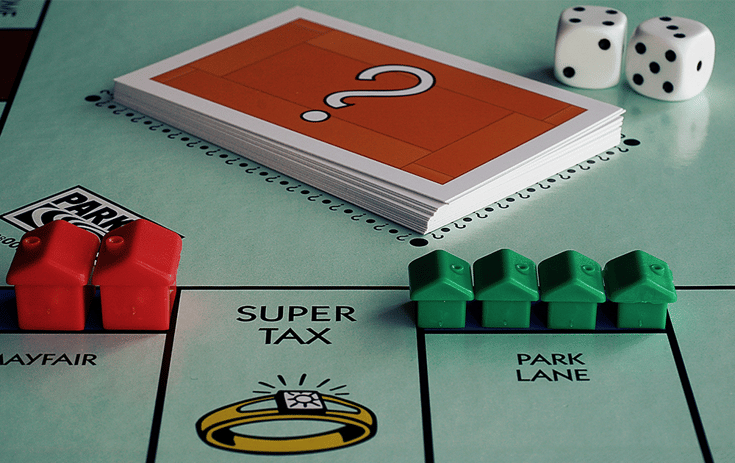As safe as houses? How property stacks up as an investment
In the second blog of our property series, we compare how property performs against other investments when it comes to some core principles of good investing.

Hands up who knows someone who bought a house for peanuts back in the day that’s now worth six, or even seven, figures. If you’re lucky, it’s you! No-one disputes that money can be made from property, but with today’s much higher house prices, rising mortgage rates and stricter buy-to-let tax landscape, the golden days of making a fortune with minimal effort are long gone.
Still, as a famously property-loving nation, many people in the UK turn to property as a ‘safe’ investment, and some even bank on bricks and mortar as an alternative pension. While there’s no right or wrong way for everyone to invest, we take a look at how property fares when it comes to three core elements of investing: risk and return, liquidity and diversification.
Risk and return: getting back what you deserve
Generally, the more risk you’re willing to take with your investments, the larger the potential reward. Cash in a savings account or bond is low risk/low reward because the set interest rate over a defined period gives you a good idea of how much you’ll get back. By offering less certainty, property can bring higher rewards over the long term.
However, there’s no guarantee that property will go up in value, especially at the exact time you want to sell. And property’s purple patch seems to be fading – in October, following persistent mortgage rate hikes, house prices fell across all UK regions for the first time since 2009. To work out the real returns from property – what you actually get back compared to what you’ve put in – you need to factor in the ongoing costs of maintenance, rental expenses, insurance, and various income and property taxes over the years. That’s likely to be a big number.
Like property, you can’t foresee how much you’ll make from investments in stocks and shares. Considered high risk assets because they go up and down in value, there’s a chance you could get back less than you put in if you take your money out at the wrong time. But if your portfolio or ISA is spread across a range of markets, industries and geographical areas, you’ll be able to benefit from what’s doing well at any given time. By staying invested in a sensibly chosen, well-managed and diversified portfolio, you can expect to see increasing returns over the long term.
Liquidity: unlocking your money when you need it
A key consideration when investing is how easy it will be to get back what you’ve put in. Life is unpredictable and you never know when your circumstances may change. We’ve got many clients who retired earlier than planned due to redundancy or had unexpected family or health issues that meant they needed to access funds in a hurry. Good liquidity also comes in handy for the nice things in life, such as enabling a splurge on a holiday or big-ticket purchase that can’t be met by a rainy-day fund.
If you have capital in an investment portfolio, it’s easy to free up cash when you want it, and you can just sell the amount you need rather than the whole lot. With property, on the other hand, it’s all or nothing. You’ll also have a much longer wait to secure the right buyer and get your money back – several months instead of a few days. In either case, you’ll be beholden to whatever the market is doing at the time you sell, but with property, you’re more likely to be talking about a bigger sum of money. If you have to sell at the wrong time, that can translate into a significant loss, whether that’s getting less than you put in or the missed opportunity to recoup greater returns with time. And if you do well out of it, we have three words for you: Capital. Gains. Tax.
Diversification: casting a wide net
Another crucial part of investing is making sure you’re not concentrated in any one area. That includes property. If you already own a house, buying a second property may make you overweight in this one asset class, especially if you don’t have much invested elsewhere. When property prices drop, both your properties will likely fall in value, while other asset classes may be doing well.
A good portfolio is spread across different asset types, regions and market sectors to reduce risk and capture returns wherever they turn up. It’s sensible to diversify even further within each asset class – take the Goodmans portfolios, which invest in shares from over 10,000 different companies from sectors around the world to give clients the best possible chance of harvesting good returns. When it comes to bricks and mortar, however, most people can only afford to buy one or two properties, offering little to no diversification.
Doing what’s right for you
While successful investing hinges on some key principles, it’s ultimately about building the right strategy for your particular situation, needs and goals. For some people that includes owning more than one property. Whether it’s a stream of income as a buy-to-let, a holiday home, or a helping hand for family members, it’s not always about maximising returns or tax efficiency. In any case, it’s worth regularly reviewing whether all your savings and investments are doing what they should to benefit you and your family – just give us a call to arrange a chat.
See our first blog on the risks of investing in buy-to-let property vs. the stock market here
This article should not be considered investment advice or an offer of any product for sale. It does not represent a recommendation of any security, strategy or investment product. All information has been obtained from sources believed to be reliable but is not guaranteed. Past performance is not indicative of future results and no representation is made that the stated results will be replicated.


